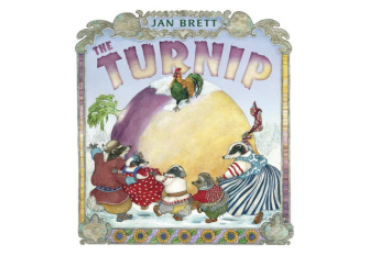A Trio of Literary Connections

Making garden connections to subjects outside science and math is a big part of using the garden to its optimal potential. Here are three ideas that hone in on literature.
1. You may be familiar with Jan Brett’s book,The Turnip, a folktale that is also the basis for Irene Yates’ book, The Enormous Turnip, and Aleksei Tolstoy’s book, The Gigantic Turnip. Reading the three books and noting the cultural differences and similarities of the same folktale is a 2nd grade literary standard. The logical garden extension is to plant some turnip seeds and watch them grow. Will your class grow a huge turnip that can only be pulled with teamwork from the entire class? Only time will tell!
2. Two books that offer a fun character study are: Bear and Bunny Grow Tomatoes, by Bruce Koscielniak; and Tops and Bottoms, by Janet Stevens. Both stories feature two main characters: a bear and a bunny. However, the attributes of the animals are quite opposite. In one book the bear is the dutiful gardener, while the bunny takes a different approach; in the other story, the bunny, Hare, is the energetic gardener while bear can’t seem to stay awake, but then again, perhaps he is hibernating? Students are sure to enjoy these comparisons and many others.
3. Carrots are a kid-friendly veggie and the subject of several kids’ books. Take these three, for example: The Carrot Seed, by Ruth Krauss; Carrots Grow Underground, by Mari Schuh; and Too Many Carrots, by Katy Hudson. While the subject of these three books is quite obviously carrots, the author’s intent is different in each one. From informational to inspirational to fanciful fiction, each author accomplishes a different goal despite using the same subject matter.
This article appeared in the March 2020 FRESH from the Garden ENews. Subscribe here.
- Categories: